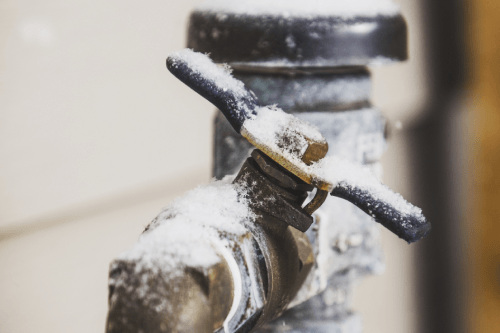Were you trying to locate information around Winter Plumbing Precautions: Preventing Frozen Pipes?

Winter can wreak havoc on your plumbing, specifically by freezing pipes. Here's just how to avoid it from taking place and what to do if it does.
Introduction
As temperature levels decrease, the risk of frozen pipelines increases, possibly resulting in pricey repair work and water damage. Recognizing how to avoid icy pipes is important for homeowners in cold climates.
Recognizing Icy Pipelines
What creates pipes to freeze?
Pipes freeze when exposed to temperature levels listed below 32 ° F (0 ° C) for extended durations. As water inside the pipelines freezes, it expands, taxing the pipe wall surfaces and possibly creating them to burst.
Threats and damages
Frozen pipelines can lead to water interruptions, home damage, and costly repairs. Ruptured pipes can flooding homes and cause substantial structural damages.
Signs of Frozen Water Lines
Identifying icy pipelines early can avoid them from rupturing.
How to identify frozen pipes
Look for decreased water circulation from faucets, unusual smells or sounds from pipelines, and visible frost on exposed pipelines.
Prevention Tips
Shielding prone pipes
Cover pipes in insulation sleeves or utilize warmth tape to safeguard them from freezing temperature levels. Focus on pipelines in unheated or external locations of the home.
Heating methods
Maintain interior areas effectively warmed, specifically areas with plumbing. Open up closet doors to permit cozy air to flow around pipelines under sinks.
Securing Outside Pipes
Garden hose pipes and outside faucets
Disconnect and drain yard tubes prior to wintertime. Set up frost-proof spigots or cover outside faucets with shielded caps.
What to Do If Your Pipes Freeze
Immediate actions to take
If you believe icy pipes, maintain taps available to alleviate stress as the ice thaws. Utilize a hairdryer or towels taken in warm water to thaw pipes gradually.
Long-Term Solutions
Architectural changes
Take into consideration rerouting pipes far from outside wall surfaces or unheated locations. Include added insulation to attic rooms, cellars, and crawl spaces.
Updating insulation
Buy high-grade insulation for pipelines, attic rooms, and walls. Correct insulation helps keep regular temperature levels and lowers the threat of icy pipes.
Conclusion
Avoiding frozen pipelines needs positive procedures and quick responses. By comprehending the causes, indicators, and preventive measures, house owners can secure their pipes throughout cold weather.
5 Ways to Prevent Frozen Pipes
Drain Outdoor Faucets and Disconnect Hoses
First, close the shut-off valve that controls the flow of water in the pipe to your outdoor faucet. Then, head outside to disconnect and drain your hose and open the outdoor faucet to allow the water to completely drain out of the line. Turn off the faucet when done. Finally, head back to the shut-off valve and drain the remaining water inside the pipe into a bucket or container. Additionally, if you have a home irrigation system, you should consider hiring an expert to clear the system of water each year.
Insulate Pipes
One of the best and most cost-effective methods for preventing frozen water pipes is to wrap your pipes with insulation. This is especially important for areas in your home that aren’t exposed to heat, such as an attic. We suggest using foam sleeves, which can typically be found at your local hardware store.
Keep Heat Running at 65
Your pipes are located inside your walls, and the temperature there is much colder than the rest of the house. To prevent your pipes from freezing, The Insurance Information Institute suggests that you keep your home heated to at least 65 degrees, even when traveling. You may want to invest in smart devices that can keep an eye on the temperature in your home while you’re away.
Leave Water Dripping
Moving water — even a small trickle — can prevent ice from forming inside your pipes. When freezing temps are imminent, start a drip of water from all faucets that serve exposed pipes. Leaving a few faucets running will also help relieve pressure inside the pipes and help prevent a rupture if the water inside freezes.
Open Cupboard Doors
Warm your kitchen and bathroom pipes by opening cupboards and vanities. You should also leave your interior doors ajar to help warm air circulate evenly throughout your home.

Do you enjoy reading up on 6 Ways to Prevent Frozen Pipes? Write a remark directly below. We will be delighted to hear your opinion about this post. In hopes that you visit us again in the future. If you enjoyed our blog entry please don't forget to share it. Thanks for your time. Revisit us soon.
Explore Now